The home of Moshik Hadida – owner of an architecture and interior design firm, and his family A deliberate combination of masses, dimensions, and volumes, the use of natural materials alongside industrial ones, a monochromatic and precise color palette, and facades that penetrate the building and become an integral part of the internal space are just some of the features of the home designed by Moshik Hadida, owner of a firm specializing in architecture and interior design, for his family. Photography by Oded Smadar

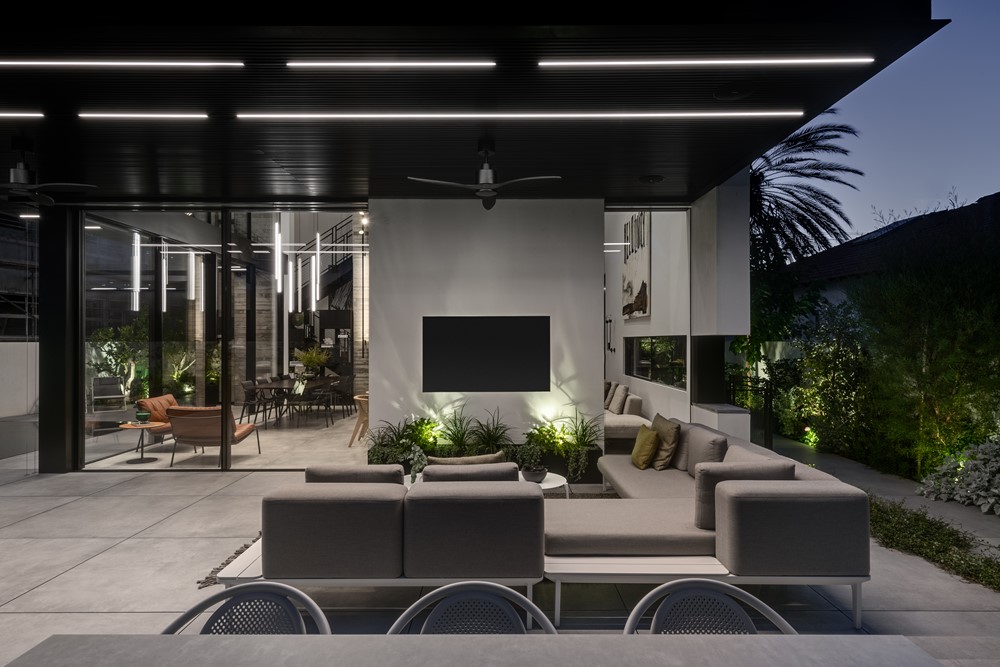

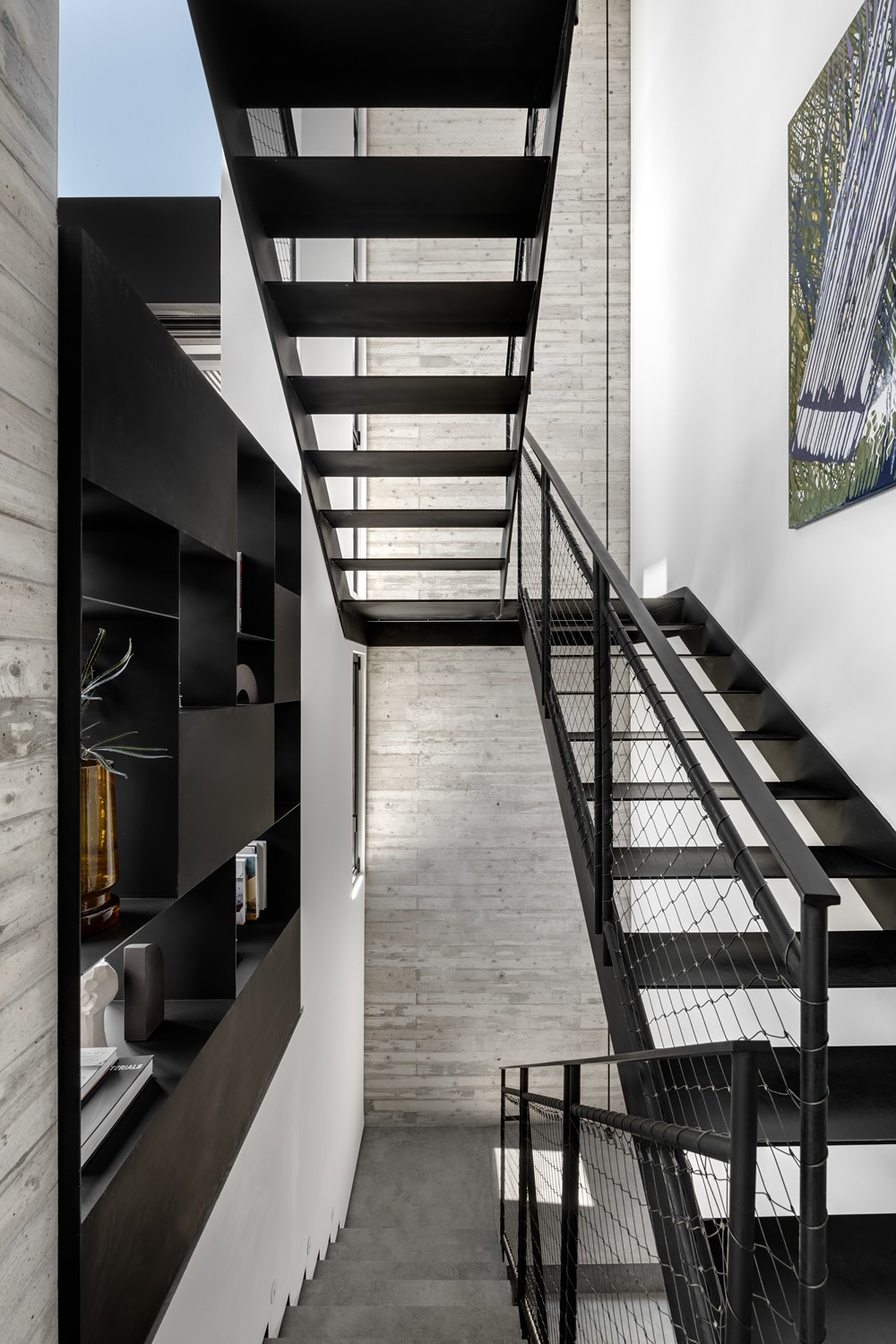

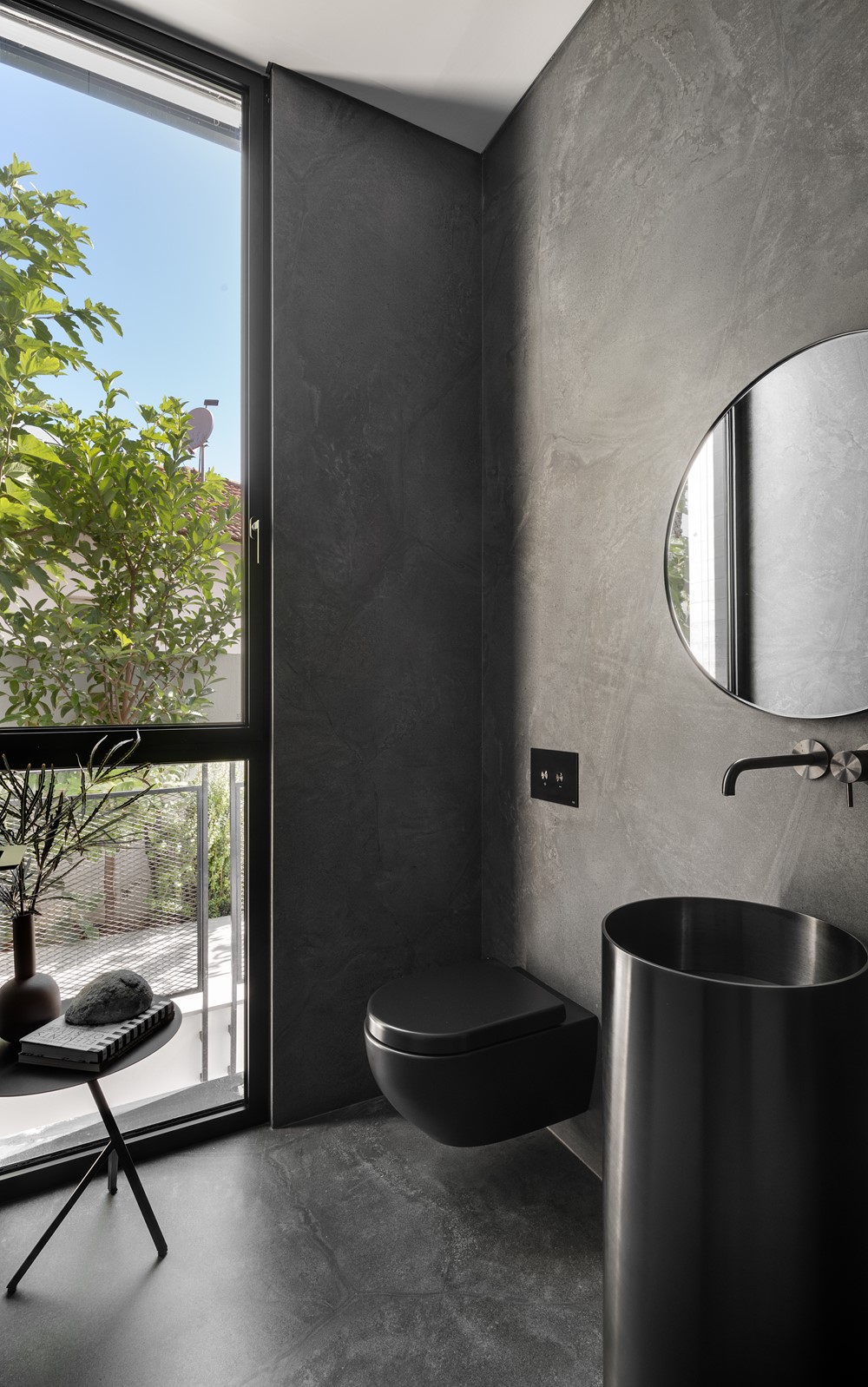
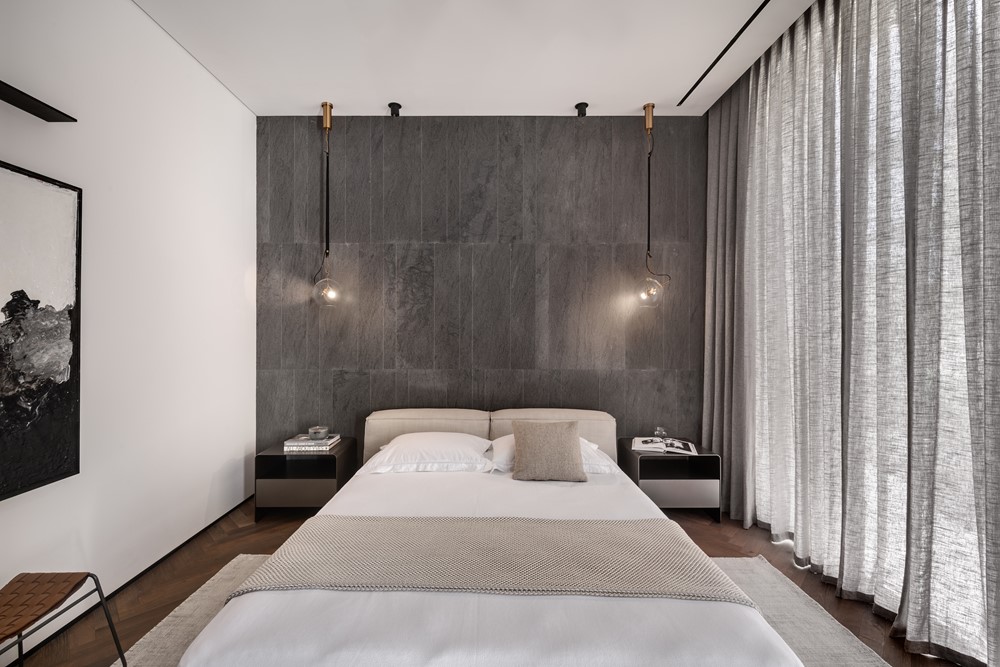


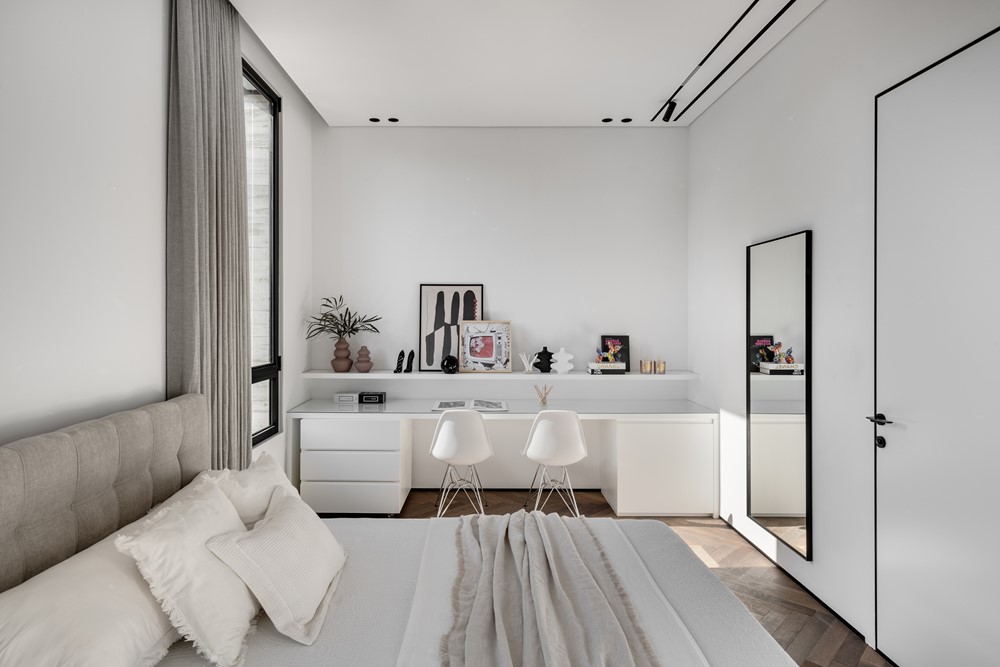

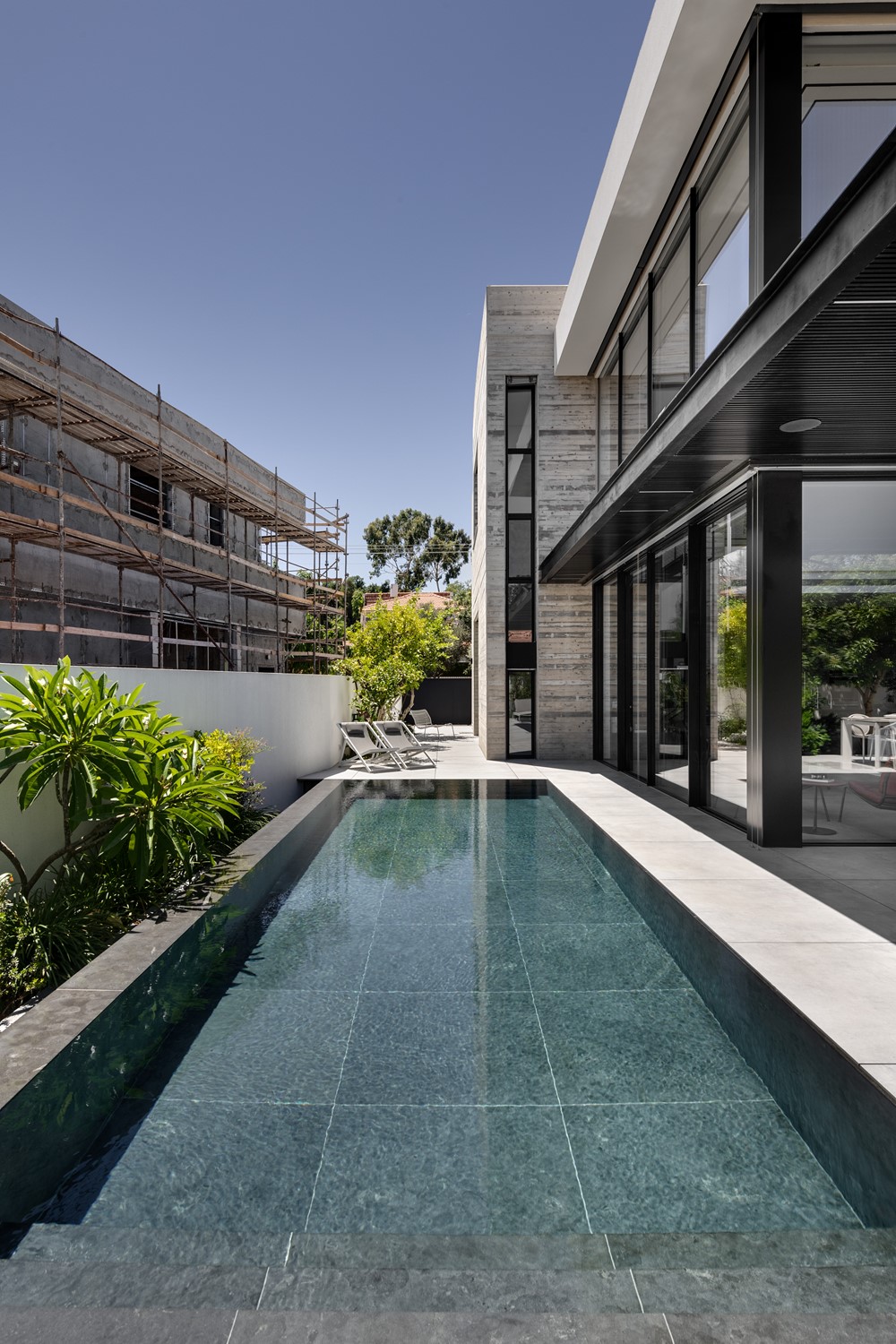

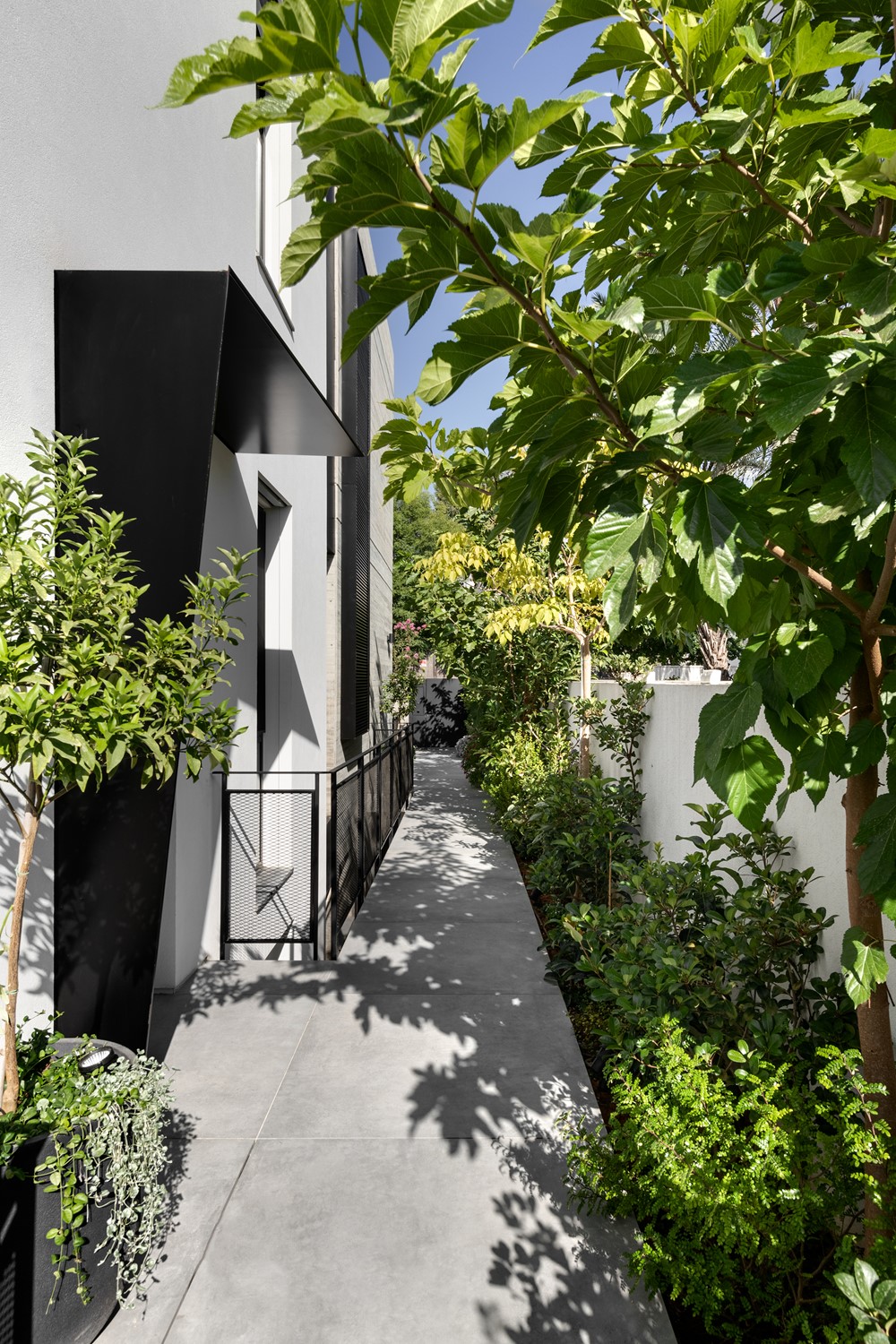

Welcome to the home of Moshik Hadida, owner of an architecture and interior design firm, his wife the accountant, and their three adult children – a home that faithfully represents the wide range of styles characterizing Hadida’s signature, ranging from neo-classical to modern-industrial. The new home, built from the ground up during the three waves of the Corona pandemic, is where the family moved from their apartment in Kiryat Ono, and it’s clear that Hadida succeeded in translating the list of wants and needs into a pleasant and accommodating living environment on one hand, and a powerful one on the other.
“After years of living in an apartment, the time came to fulfill the family dream and move into a spacious private home where I could realize my desires and cravings as a designer, and no less important, those of each and every one of us,” he says. “The overarching goal was to create a personal space, with a surrounding garden that would allow us to enjoy the surrounding tranquility. It was important for me to create meaningful yet accommodating spaces, while simultaneously implementing the technical and creative knowledge and tools I’ve acquired over the years. Unlike the homes I design for others, here I didn’t need to decipher needs and build a program from scratch – I quickly understood how the house would look in terms of planning, and indeed, the natural changes that occurred along the way were minor in that respect. The greater challenge for me was choosing from the countless finishing materials I was exposed to over the years, but I believe the end result demonstrates a balanced choice that creates a complete and harmonious whole.”
“The line is very clear, minimalist and tight, the spaces are large and bright, and the elements are mostly made of natural materials like wood, stone, and iron, alongside industrial materials like aluminum and concrete, creating an organic appearance rich with many textures and layers.”
Unlike many new homes in Israel, where the unmediated connection between the outside and inside is a derivative of open, unobstructed views between the two arenas, in his private home, Hadida managed to express the connection between them in another way: he employed the facades as a visual element – they penetrate the building and become an integral part of the interior spaces’ experience. The boundaries between the wings blur, and the architecture is interwoven, becoming an inseparable part of the interior design.
“The house consists of several masses, some made of exposed concrete and others clad in stucco. For the street-facing facade, I wanted to keep it as minimalist and modest as possible, while as you progress inward, deeper into the plot, the experience changes and the openness between the house and the rear courtyard and entertaining areas is at its peak.”
“Upon opening the entrance gate, a path leads to the side entrance door, above which I created an asymmetrical metal awning, resembling a paper fold emanating from the plaster plane. The path is flanked by vegetation on one side and an iron railing with a rigid wire mesh infill on the other, allowing natural light to penetrate unobstructed into the English courtyards surrounding the lower level.”
“The entrance door is free of ornamentation and made of smooth black aluminum. Immediately upon opening it, the public space that soars to a height of 6.8 meters is revealed, along with the giant windows overlooking the garden and pool. The dimensions in this space are certainly powerful, but the proportions are right, so you don’t feel exposed or threatened.”
Where: Ganei Tikva
For: The private home of Moshik Hadida – owner of an architecture and interior design firm, his wife, and their three children (ages 24, 20, and 15)
Plot Size: About half a dunam,
Built Area: Approx. 420 sq.m
Photography: Oded Smadar



